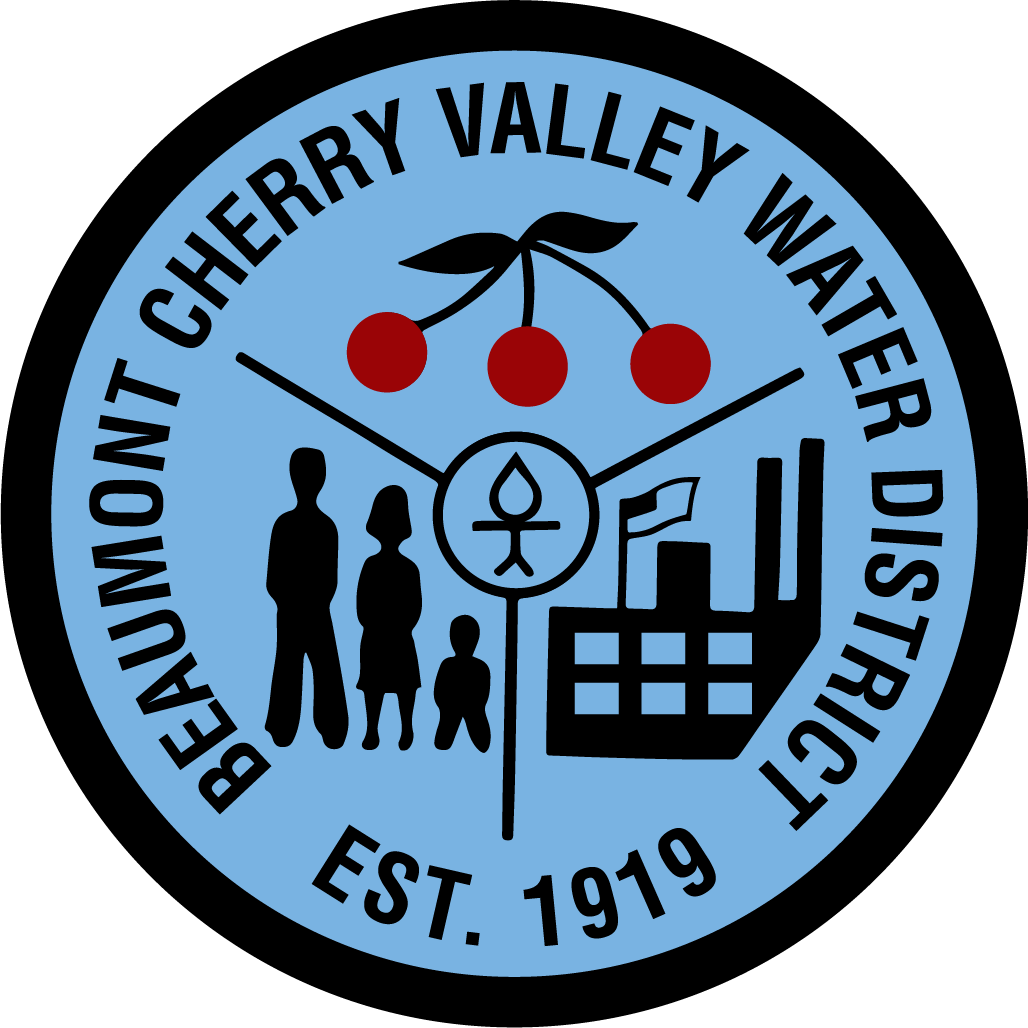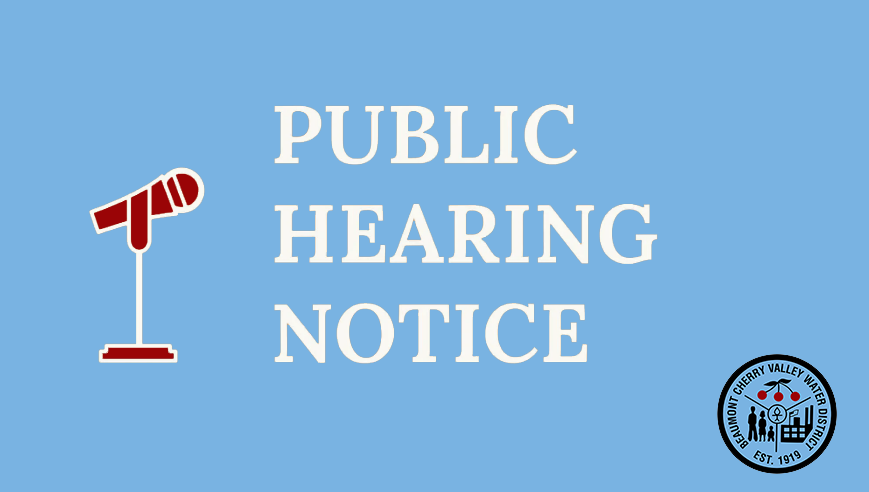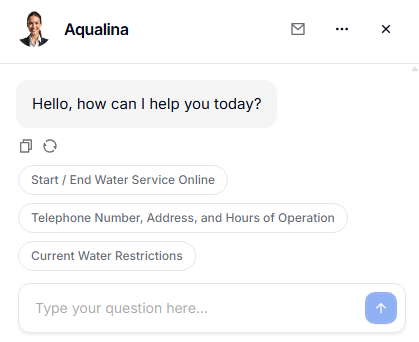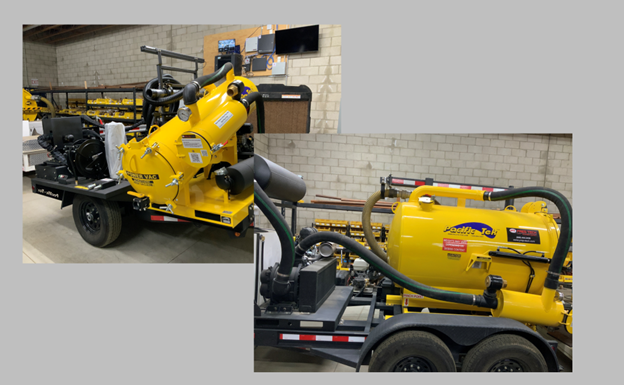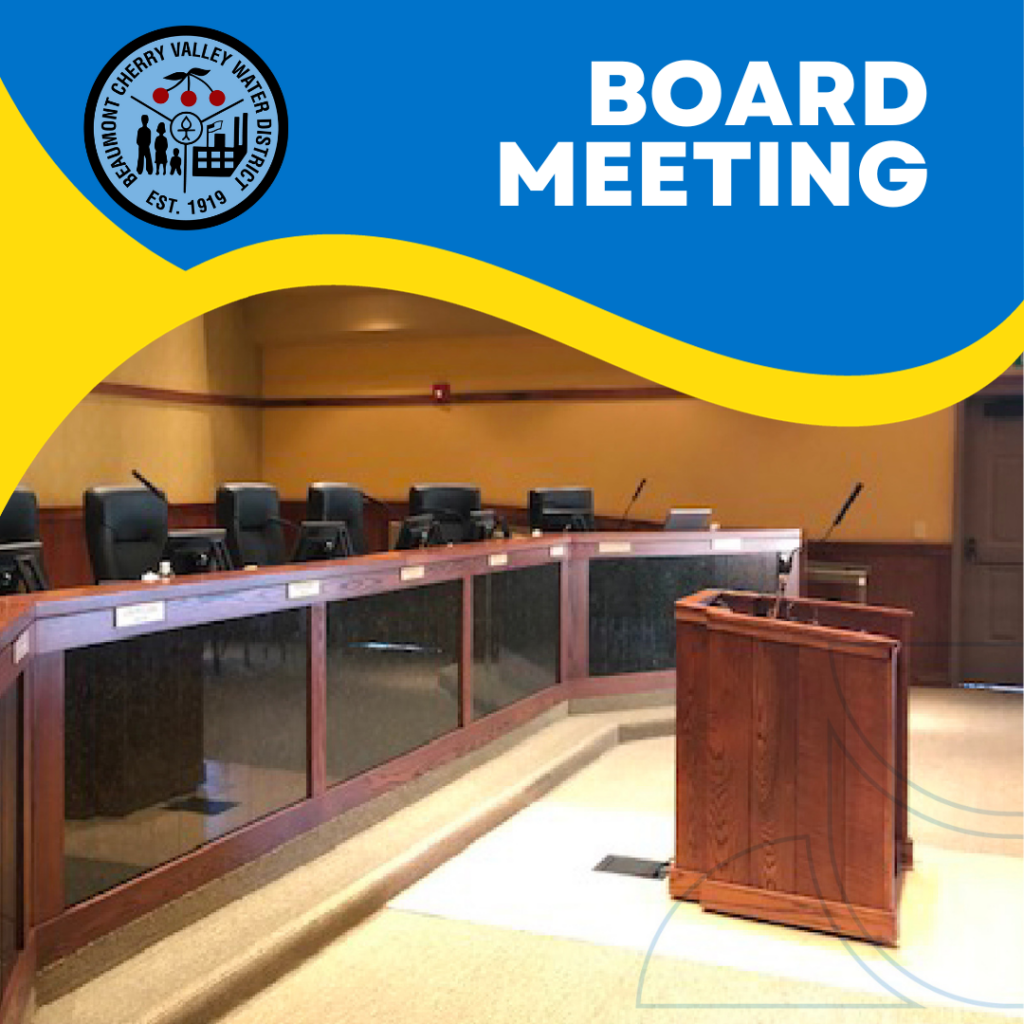Latest News
Groundwater 101
Groundwater 101: What It Is & Why It Matters Here at Home
Groundwater is the fresh water stored beneath the ground in soil and rock formations called aquifers. In Beaumont and Cherry Valley, much of our drinking water comes from the Beaumont Groundwater Basin, a vital underground resource that helps keep water flowing to our homes, schools, and businesses year-round.
Groundwater is especially important for our community because it helps us:
- Provide a reliable local water supply
- Reduce dependence on imported water
- Stay resilient during drought and dry years
- Support long-term affordability
- Protect our water future for generations to come
By using groundwater wisely and supporting local recharge and conservation efforts, we help protect one of our region’s most valuable natural resources.
Learn more at https://bcvwd.gov and https://beaumontbasinwatermaster.org/ .#BCVWD #Groundwater101 #BeaumontBasin #WaterEducation #BeWaterWise #LocalWater #WaterSustainability
Meet Aqualina — Your New BCVWD Virtual Assistant!
We’re excited to share that our new AI-powered helper, Aqualina, is now live on our website at https://bcvwd.gov. Aqualina is here to make it easier and faster for you to get answers about your water service, anytime, day or night.
We know that new technology can feel a little intimidating at first. That’s why we want to assure our community that Aqualina is not here to replace our Customer Service Team. Our staff remain at the heart of what we do, Aqualina simply helps answer quick questions so our team can focus on the more complex needs where their expertise matters most.
Aqualina can help with things like:
- Billing and payment questions
- Service information
- Conservation tips
- Forms and links
- And much more
“Innovations like Aqualina help us improve efficiency and customer experience, but they also highlight the importance of our dedicated employees,” stated BCVWD Board Member David Hoffman. “This virtual assistant is designed to support the great work our staff already does, giving them more time for the challenging tasks while offering residents a convenient way to find quick answers day or night. It’s a win for both the community and our team.”
We’re proud to bring helpful, modern tools to our community, without losing the personal service you rely on. Give Aqualina a try at https://bcvwd.gov and let us know what you think!
#BCVWD #Aqualina #CustomerService #WaterDistrict #InnovationWithHeart
Explore the BCVWD Fun Zone!
Visit our Fun Zone at https://bcvwd.gov and enjoy:Online Coloring Pages
Word Puzzles
Water-Themed Match Game
It’s a great way for kids (and adults!) to explore how water works while having fun.
When you finish a coloring page or puzzle, share your masterpiece with us using #BCVWD or #BCVWDFunZone. We would love to see your creations!
Let’s celebrate curiosity, creativity, and the value of water together.
#BCVWD #BCVWDFunZone #WaterEducation #CommunityEngagement #LearnWithBCVWD
Happy Thanksgiving
Happy Thanksgiving from all of us at Beaumont-Cherry Valley Water District!
Today we give thanks for our incredible community, and for the water that connects us all.
We’re grateful for the opportunity to serve more than 22,000 customers with safe, reliable, high-quality water every day. Your trust inspires us to keep investing in the people, infrastructure, and service that sustain our shared future.
To allow staff to celebrate with their families, our offices will be closed Thursday, November 27. For water emergencies, please call (951) 845-9581, option 9.
Wishing you and your loved ones a joyful and safe Thanksgiving!
#HappyThanksgiving #BCVWD #GratefulForWater #CommunityFirst #ValueOfWater
Chrom 6
Proud to Provide Quality Water You Can Count On Every drop matters, and at Beaumont-Cherry Valley Water District, we’re proud to deliver safe, high-quality water to more than 22,000 customers every day.
From source to tap, our dedicated team performs rigorous testing, system maintenance, and infrastructure improvements to ensure the water you receive meets or exceeds all state and federal standards.
Quality, reliability, and service are at the heart of everything we do, because our community deserves water you can count on.
Learn more about your water at https://bcvwd.gov
#BCVWD #WaterQuality #SafeWater #WaterYouCanCountOn #ReliableWater #CommunityTrust
Investing in Efficiency and Safety: New Equipment Improves Operations
Beaumont-Cherry Valley Water District is continuing to invest in tools and technology that enhance our efficiency, reliability, and safety in the field.
As part of our Capital Improvement Program, the District has authorized the purchase of two new pieces of equipment: a Power Vacuum and Valve Exerciser Trailer and a Power Vacuum Excavator Trailer. These trailer-mounted systems will replace the aging 2004 GIS/Muck Truck (Unit #8), which had reached the end of its service life.
The new trailers allow our Operations team to:
Safely perform valve maintenance to keep the water system functioning during emergencies and repairs.
Quickly remove soil and debris around pipes, reducing the need for hand digging and minimizing risk to staff and infrastructure.
Respond faster to leaks and service emergencies with specialized, towable equipment that’s easier to maintain and transport.
By purchasing two versatile trailers instead of a single truck replacement, BCVWD is not only improving flexibility but also reducing long-term costs and adapting to future fleet requirements, including California’s evolving vehicle standards.
“This investment strengthens our ability to respond efficiently to water system needs while improving safety for our crews and the community,” said John Covington, BCVWD Board of Directors. “It demonstrates our ongoing commitment to reliability, safety, and responsible resource management.”
Learn more about BCVWD’s ongoing infrastructure investments at https://bcvwd.gov.
#BCVWD #CIP #PublicWorks #ReliableWater #WaterInfrastructure #CommunityInvestment #SafetyFirst #BeaumontWater
Dispelling Bottled Water Myths: Why Tap Water Deserves More Trust
Based on the AWWA Opflow article “Dispelling Bottled Water Myths.” DOI link: https://doi.org/10.1002/opfl.70009
Bottled water has become a normal part of daily life for many people. Sales have grown every year, and more than 16 billion gallons were consumed in 2024. A lot of this growth comes from the belief that bottled water is cleaner or safer than tap water.
The truth is that drinking water in the United States is heavily regulated and monitored. Public water systems must meet strict rules, report results, and test water regularly. These standards make tap water one of the safest and most reliable resources in the country.
Tap water is regulated at every step
The U.S. Environmental Protection Agency sets drinking water rules for public water systems. These rules cover 94 contaminants, including metals, chemicals, and pathogens. Utilities must follow treatment requirements, sampling schedules, and public reporting standards.
The EPA also has secondary standards to help with taste, smell, and color. These are not health-based, but they help utilities provide pleasant water for customers.
These regulations are updated as new information becomes available. Recent changes include new limits for PFAS and stronger monitoring requirements. The rules for tap water are more detailed and wide-ranging than those for bottled water.
Bottled water is not held to the same standards
Bottled water is regulated by the U.S. Food and Drug Administration, not the EPA. FDA rules are different and in some cases less strict. Bottled water companies do not have to test as frequently or report results to the public the same way utilities do.
Research has shown that bottled water can contain contaminants such as uranium, arsenic, and radiological materials. In one study of 30 bottled water samples, more than half contained uranium and more than two-thirds contained arsenic. Some samples exceeded health-based limits.
There have also been several safety cases involving bottled water brands. In one example, a brand contained hydrazine, a chemical linked to liver and kidney problems. Another brand was connected to more than 20 cases of nonviral hepatitis. These incidents show that bottled water is not automatically safer than what comes from the tap.
Bottled water costs much more than tap water
EPA data shows the average cost of tap water is about 0.6 cents per gallon. Bottled water commonly costs one to three dollars per gallon. In many cases the price difference can be as high as 1,000 times.
Customers often pay for packaging, transportation, and branding, not for better water quality. Meanwhile, public water systems must keep rates affordable while maintaining treatment plants, pipelines, and monitoring programs.
Bottled water has a real environmental impact
Plastic bottle waste is a serious environmental problem. The photo in the Opflow article shows bottles scattered across a shoreline, which is a familiar scene in many places. Choosing tap water helps reduce plastic, lowers energy use, and cuts down on emissions from transportation and manufacturing.
Using a reusable bottle instead of single-use plastic can make a noticeable difference, especially over time.
Why tap water is reliable
Public water systems operate under layers of protection. These include:
- continuous water quality testing
- trained and certified operators
- routine sampling throughout the system
- required public reports
- oversight from state and federal regulators
Utilities are required to notify customers if there is a problem, explain what happened, and describe what is being done to fix it. This level of transparency is one of the strengths of the public water system.
The bottom line
Bottled water can be convenient, but it is not always safer, cleaner, or better than tap water. In many cases it is less regulated, more expensive, and harder on the environment.
Tap water is safe, affordable, and reliable. It is tested every day and held to some of the highest drinking water standards in the world. By choosing tap water, customers support their community, protect the environment, and save money at the same time.
To read the full AWWA Opflow article, visit: https://doi.org/10.1002/opfl.70009
Regular Board Meeting Today 11/20/2025
Here’s your chance to #participate! We welcome feedback from the community during our Board of Directors meetings. Join us in person or online tonight at 6:00 p.m. Visit https://bcvwd.gov/documents/2025-board-meeting-agendas for the agenda. #BCVWD
Online via Zoom –
https://us02web.zoom.us/j/84318559070?pwd=SXIzMFZCMGh0YTFIL2tnUGlpU3h0UT09
Telephone, please dial: (669) 900-9128
Enter Meeting ID: 843 1855 9070
Enter Passcode: 113552
For public comment, use the “Raise Hand” feature on the video call when prompted. If dialing in, please dial *9 to “Raise Hand” when prompted. #BCVWD
Meet Aqualina, Your 24/7 Virtual Water District Assistant
Beaumont-Cherry Valley Water District (BCVWD) is happy to introduce you to Aqualina, a virtual assistant created to help customers find information about the District anytime, day or night. Aqualina is designed to make it easier for the community to access helpful resources, locate documents, and get quick answers to common questions about water service and District operations.
How Aqualina Can Assist You
• Guide visitors through the BCVWD website
• Helps locate forms, documents, and District policies
• Provides information about water conservation and current restrictions
• Shares contact details and office hours
• Answers general questions about BCVWD services and programs
Trained by BCVWD Staff
Aqualina is maintained and updated daily by BCVWD staff to ensure that information shared is accurate and consistent with publicly available District resources. Aqualina does not have access to customer account information and does not provide any private or confidential data.
Available at All Times
Aqualina is available 24 hours a day, seven days a week, all year long. The virtual assistant is here to help after hours, on weekends, and on holidays when the District office is closed. Aqualina does not replace BCVWD staff or customer service representatives. During regular business hours, customers are encouraged to call or visit the District office to speak directly with a Customer Service Representative.
Commitment to Service
BCVWD is committed to providing excellent customer service and improving access to information. Aqualina is part of this ongoing effort to make it easier for residents and businesses to stay informed and connected with the District.
AI Disclaimer
BCVWD strives to ensure that the information provided by Aqualina is accurate and up to date. Because Aqualina uses artificial intelligence to generate responses, there may be times when a response needs to be refined or corrected. If you notice an error or inaccuracy, please contact the District at info@bcvwd.gov so that it can be reviewed and corrected promptly.
Aqualina is trained only on publicly available information. No customer data or personal account information is used in the training or operation of the system. There is no risk of customer data exposure or breach through Aqualina.
